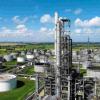Hi all, I am a 3rd year Chemical engineering student doing a short cut design on PSA for Hydrogen purification.
Background:
The project is to design a 5000 kg/hr H2 production plant. The focus of this thread is to ask a few questions regarding the final step of the process, IE: Purifying the Hydrogen to 99.98%.
Background material: Core-references first
Pressure swing adsorption by Douglas M. Ruthven et al. for general concepts, Enhancing Capacity of Activated Carbons for H2 production by Filipe V.S. Lopes et al. for related isotherms using Activated carbon AC5-KS. In addition, various papers/texts regarding general PSA design including one that is usually passed around here (A "How To" Guide for Adsorber design by Kent S. Knaebel).
Disclaimer:
I am new to the concept of PSA, having only about 3 weeks of experience looking through papers and books regarding it. If anything is wrong with the concepts I am using, do let me know so that I can learn.
Current design:
The short cut design I've used is based off the 4 step PSA cycle: Pressurization with product from Douglas M. Ruthven (which is also found, albeit more simplified in Kent S. Knaebel). This method was used to obtain the required inlet flowrate (to produce an outlet of 5000 kg/hr H2) and the required dimensions of the column for a chosen feed step time.
Due to the fact that the design is meant to be kept short, computational methods were not considered but I do have papers which contain full models which arguably are beyond my understanding coming into PSA design.
Assumptions and considerations:
1. Binary mixture of 80% H2/ 20% CO2 to be used (in reality it is a mixture of H2/CO2/CO/N2/CH4 but H2 and CO2 have the greatest weightage)
2. Pressure swing of 25 bar to 1 bar
3. Isotherms from paper mentioned in background material
4. Pressurization with product as opposed to feed*
5. Clean bed (complete purge) for each cycle
6. Assumed purity of at least 99.98% H2 in the product outlet stream (I consider this valid because H2 is very weakly adsorbed compared to every other species and reference almost always quote values >99.99% purity even with a simple 4 bed system)
7. 4 Step process, Feed -> Blowdown -> Purge -> Repressurization
8. Operating Temperature of 30 C
9. Molecular weight of feed at 10.67 kg/kmol (based off unisim)
10. Viscosity of feed at 1.111 x 10^-2 cP
11. Particle diameter of 2.9 x 10^-3 m
Results of short cut:
1. H2 Recovery of ~89%
2. Required volume of adsorbent per column = 25 m^3
3. Estimated column dimensions = 2.5 m I.D. by 5-6 m L
4. Inlet flowrate of ~855 mol/s of Feed containing 80% H2 and 20% CO2
The short cut design results were then extrapolated to a PSA cycle schedule as provided in the excel sheet attached. I have included 3 pressure equalization steps for a 6 column, 11 step PSA cycle schedule with a target feed time of ~400 seconds. Understandably, a 4 step process cannot simply be turned into an 11 step process but what I gather is that the 11 step process with additional pressure equalization steps primarily serves to improve product recovery. This means that a 4 step short cut calculation can be assumed to be a very conservative estimate and when expanded to an 11 step cycle should have no problems meeting the calculated requirements (and will probably exceed it).
Questions:
1. When designing the column, there seems to be a suggestion to keep the Reynolds number within the column low to a value of ~10-40 as quoted by Kent S. Knaebel pg. 13. Is there a reason as to why this is the case? I think it relates to the selectivity vs Re chart that was mentioned in Ruthven et al. for bulk separations but I cannot find data regarding this for a H2/CO2 mixture.
Following the above requirement results in a large cross-sectional column area (Re = (rho*u_interstitial*d_particle)/ (viscosity) or
= (Feed_in*Molecular weight*d_particle) / (Area*viscosity). The numerical result is something like a 6-8 m column diameter for the inlet flowrate of 855 mol/s to keep the Re value down to below 40. In essence, one would just split the flowrate into smaller chunks which I have no problem with but I want to understand why you would need such a low reynolds number in the first place.
2. Are there any critical flaws in what I have written above that need addressing?
If I have missed out any information that is required, just let me know. Unfortunately I cannot post the relevant background materials due to the forum's policy.
Thanks

 FB
FB











